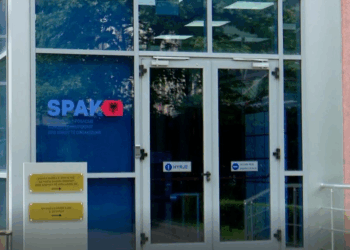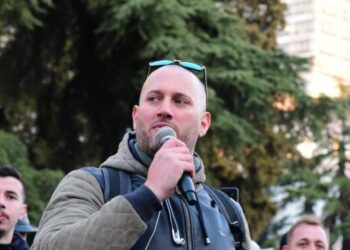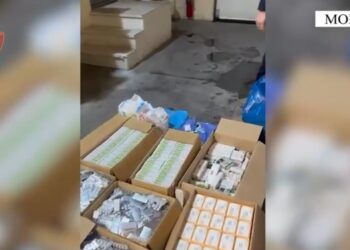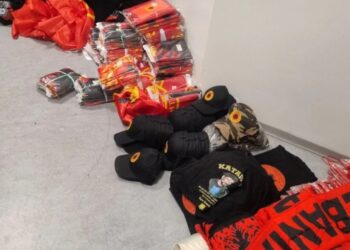By Boldnews.al
“Weapons and ammunition produced in the Balkans are in the possession of opposition groups fighting the Assad government in Syria,” so it has uncovered military analysis. ARES weapons specialists from ARES have stated that some armaments produced in the Balkans, mainly in Serbia, are being used by Syrian rebels.
M62P8 120mm shells and a 1212x128mm M02 Kyoto machine gun were identified by a YouTube video released on February 12 and a machine gun from a Facebook photo, all posted by rebel fighters in Syria.
Jenzen-Jones, an arms specialist and director of ARES, confirmed the origin of weapons, saying weapons produced in the former Yugoslavia had been documented earlier in Syria.
“From the marks on the gun you can notice that were done in Serbia. In general, we can say that Yugoslav weapons are widespread in Syria, though the most common are Chinese, Russian and possibly Belgian, “Jenzer-Jones told BIRN.
A video posted on YouTube on February 12 by rebel group JabhatAnsar al-Din shows the placement, preparation and goal with a 120mm shell near Kuneitras, southwest of Syria.
According to Ares, the Cyrillic inscription visible on the shell and the packaging shows that the M62P8 120mm explosives being shot are produced in SlavkoRodicBugojno or what is now Bosnia and Herzegovina.
These are still produced by the Serbian Krusik Corporation.
On February 16, the images posted by a Syrian rebel in the Facebook account showed a Serbian machine gun M02 Kojotë 12.7 x 108mm.
Kojota is a copy of the Soviet NSV and is produced by Zastava Arms in Kragujevac, in the center of Serbia.
On February 26, a Syrian opposition armed group also published on YouTube what ARES claims to be a Serbian mortar M69A 82mm.
Mortar M69A and 81mm M69B variants were produced by the Military Technical Institute in Belgrade.
According to ARES, they are derivatives of Yugoslav mortar M69, which is currently in the arsenal of several former Yugoslav republics and in Afghanistan.
BIRN contacted Zastava Arms, the Krusik Corporation and the Military Technical Institute in Belgrade for details about the origin of weapons and their sale, but did not receive any response.
According to the Serbian government, the biggest buyers of Serbian weapons are the United States, Saudi Arabia, Kuwait, Israel and South American countries.
This is not the first time ammunition from the former Yugoslav states ended up in the hands of warriors in the Middle East.
In 2015, the search by Amnesty International showed that heavy and light weapons sent from Bosnia and Serbia to Britain ended up in the hands of militant Islamic groups in Iraq.
In 2014, a Conflict Armaments Research study found that the ammunition used by ISIS was produced in 21 countries with production dates from 1945 to 2014.
Of 1730 types of ammunition analyzed, 142 were produced in Serbia, 445 in China, 338 in the Soviet Union, 323 in the US and 154 in the Russian Federation.
Serbia has had a long and controversial history of supplying arms to Libya, a relationship that has been investigated by the United Nations.
Earlier, BIRN has documented these links, involving two of Serbia’s biggest traders, Slobodan Tesic and PetarCrnogorac – though there is no evidence to link them directly to the recent kidnappings of Serbian citizens.














